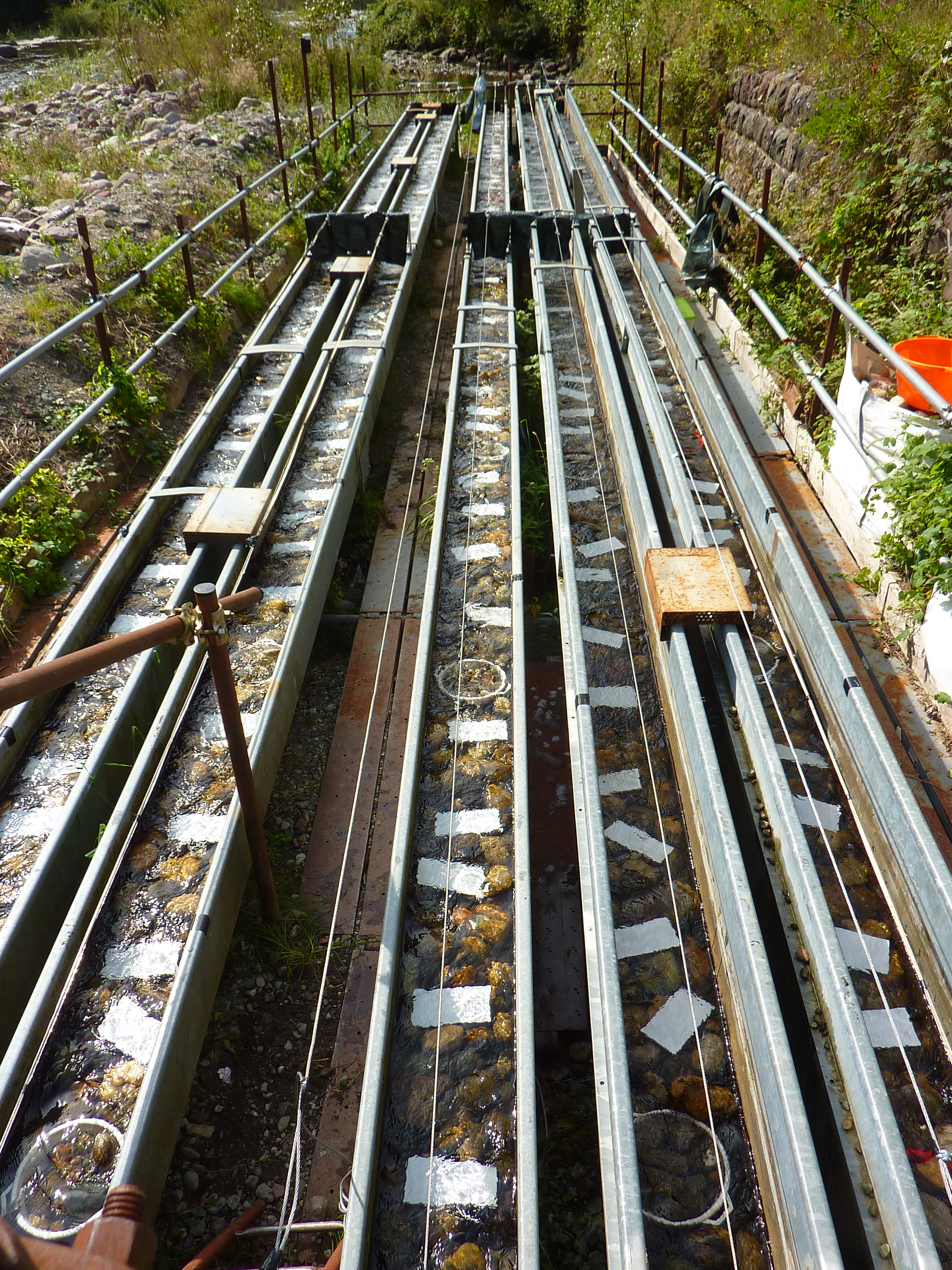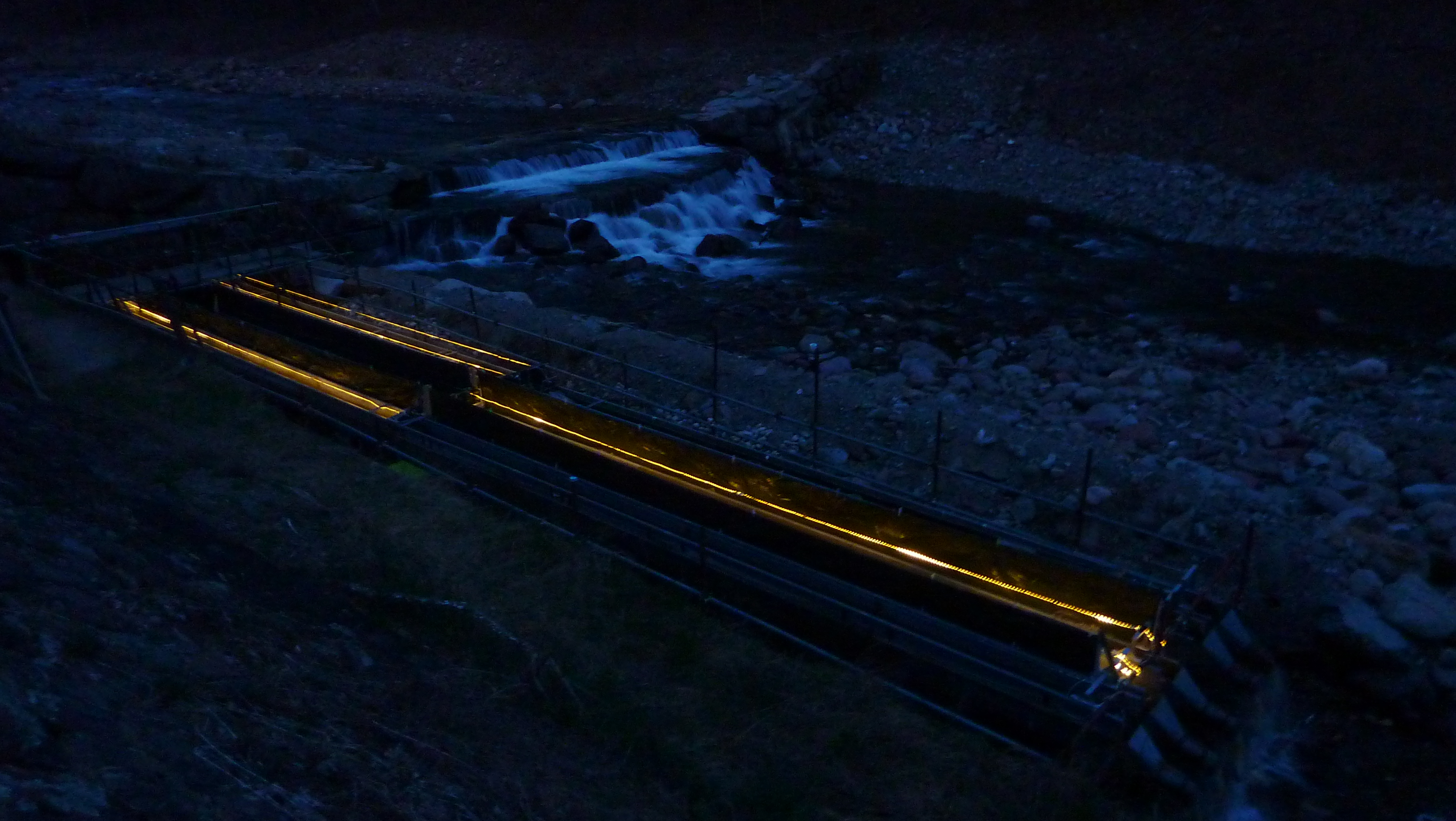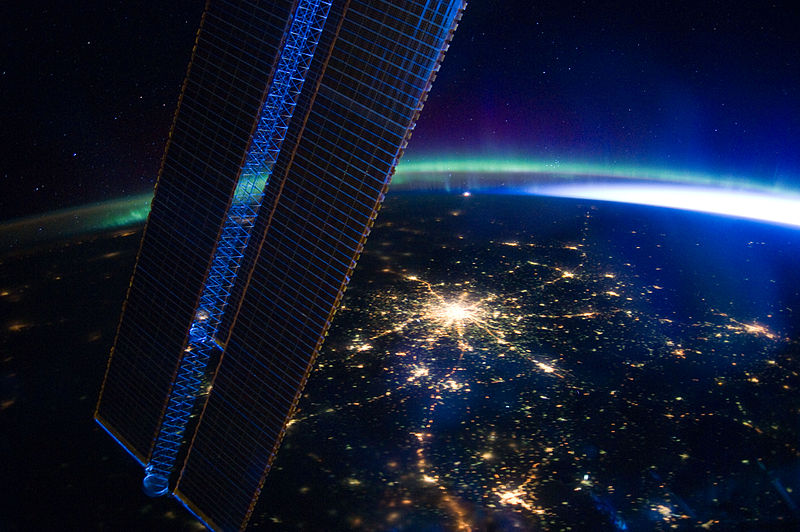
Produced in partnership with NPR Scicommers
Is light pollution changing how plants do – and don't – grow?
Plants depend on cycles of light. Now, they're always on
Every living thing has rhythm. It doesn’t matter if it’s a single-celled microbe or complex creatures such as ourselves – activities occur according to daily, seasonal, and even lunar cycles.
These cycles are usually synchronized by light. Therefore, a potential hazard to natural rhythms is light pollution, or as scientists call it, artificial light at night (ALAN). Although there have been efforts to reduce ALAN, light pollution has increased both in terms of brightness and land area cover, respectively up 1.8 percent and 2.2 percent per year since 2012. In humans, exposure to artificial light at night is associated with a myriad of health problems such as sleep disorders, depression, and certain types of cancer. Plants can also be affected by light pollution, and we are just beginning to understand how.
Plants depend on light for energy. They gather sunlight in microscopic, chemical solar panels called chloroplasts. The light energy moves through a series of chemical reactions that turn carbon dioxide into usable energy, like glucose, in a process called photosynthesis. With few exceptions, plants are the only type of organisms that can directly use solar energy to make their own food. Because of this, it is easy to think that light pollution should have an overall positive effect on plants. Increased light should mean more photosynthesis, giving plants more chemical energy for growth and other functions.
But more growth isn’t what scientists always find. In a study recently published in Limnology and Oceanography, Maja Grubisic of the Leibniz-Institute of Freshwater Ecology and Inland Fisheries and colleagues found that light pollution may actually inhibit growth of aquatic microscopic plant communities called periphyton.
Over a three-week experiment, exposure to the increasingly popular LED lighting reduced periphyton by more than half compared to controls, which received no artificial nighttime lighting. This suggests light pollution reduced overall periphyton growth, a result that was actually opposite of what the researchers expected to find.

The experiment by day
Maja Grubisic, the Leibniz-Institute of Freshwater Ecology and Inland Fisheries
Grubisic noted in an interview that by using a lower intensity, her experiment mimicked real-life light pollution levels more commonly experienced by plant life. The low light intensities “may have been too low to boost photosynthetic production, but simultaneously disrupted other processes,” which may explain the unexpected lower growth found in the periphyton communities, she said.
ALAN on the grasslands
Light pollution has been shown to negatively impact much larger plants. In a four-year study of grassland plants, biogeographer Jonathan Bennie and colleagues from the University of Exeter found that, toward the end of the study, low intensities of LED lighting at night reduced the amount of one species, colonial bentgrass.
Grubisic said that light pollution may reduce some plant growth because of a “trade-off of effects" ALAN has on plants depending on its intensity. Higher levels of light pollution may indeed provide enough light to increase photosynthesis and plant growth. Whereas low levels of light may not provide enough energy to be stimulating but could disrupt other processes that depend on light as a signal, leading to negative consequences. Indeed, in the grassland study, whereas colonial bentgrass was negatively affected by low light, sweet vernal grass and Yorkshire fog grass actually increased under higher levels of light pollution.
Light pollution could be "disrupting" because light is also information for plants. If you live in a seasonal climate, you have likely witnessed this first-hand. As fall begins, the shorter days and cooler temperatures provide a signal to some trees that it is time to stop photosynthesizing and start dropping leaves to protect themselves from the impending freezing temperatures of winter. In fact, trees living near street lamps that had retained some of their leaves longer than normal was one of the earliest observations of the effects of light pollution on plants.

The experiment by night
Maja Grubisic, the Leibniz-Institute of Freshwater Ecology and Inland Fisheries
In the case the periphyton communities, Grubisic suggested that the unnatural timing of light pollution could have disrupted the microscopic plants’ daily rhythm, depriving them of the much-needed rest and repair that occurs at night. But light in terms of energy can also be disruptive. Several types of microscopic plants found in the periphyton community can live under light intensities much lower than what was provided in the study. However, the amount of resources and energy it takes to maintain photosynthesis at night may cost more than the plant gains. In our interview, Grubisic said it is difficult to know whether one or both of these scenarios played out in her experiment, and that “exact mechanisms behind the effects we found remain to be determined.”
They did find that the results depended on how old the periphyton community was, as well as the season. The reduction of periphyton under light pollution only occurred in newly developing periphyton communities, not ones that were already established for 22 to 26 days (although a follow-up study using more sensitive technology found changes occurred in these older communities too).
.jpg)
A Joshua tree in California
Light pollution also altered the makeup of the periphyton communities, but which species were most abundant varied by season. Further, in the spring it took three weeks for noticeable results, but only two weeks in the fall. These are important to consider in an urban an environment where physical disturbances like flooding, and chemical pollution such as agricultural run-off, could interact with light pollution to affect plants in complex ways.
Satellites have detected light pollution on every continent. Recent estimates suggest that 83 percent of the world’s population experiences some level of light pollution. This human-caused phenomenon is not isolated to urban areas, as light radiates out of cities to surrounding areas via sky glow. Despite increasing evidence that light pollution is effecting the world's vegetation, the number of direct field tests of light pollution on plants is low.

Moscow's light from space
Plants filter air and water, and they are also a source of food, medicine, and raw materials for humans and other animals. When light pollution negatively affects plants, it may impact these resources with far-reaching consequences. Still, there are ways individuals and communities can minimize light pollution impacts, Grubisic said. The use of motion-sensors, placing lights only where necessary for safety, such as busy street intersections, and utilizing designs that direct or focus light on specific locations, for example, can reduce total light pollution and minimize far-reaching glow. Less light pollution can help humans, plants, and creatures of all kinds keep a more natural rhythm.
.jpg?auto=compress%2Cformat&crop=faces&fit=crop&fm=jpg&h=360&q=70&w=540
)




I don't know if I totally buy these studies, but it would be helpful to know how many others on the topic have been done and what they found. The idea that low levels of light provides information for plants that might disrupt other processes makes sense, but a couple of points of caution:
1. I don't think periphyton is representative of all plants. In fact, it seems like a very specific type of plant community, and the conclusions drawn there can't be easily translated to other biomes like tropical and temperate forests.
2. Is LED light itself representative? Plants respond differently to different wavelengths of light, so perhaps the wavelength is driving the response seen in both studies.
3. Has anyone studied plants that grow in the high Arctic and Scandinavian countries? If the effect is a signaling one instead of the light itself being detrimental, then you would expect those plants to show a different response to changing light regimes because they are naturally exposed to nearly 24 hours of light at some points during their life cycles.
4. This is something I wonder about a lot of studies so not picking on these necessarily, and I mean this kindly, but.... what's the point? People will not stop using outdoor lights just for plants (sea turtle hatchlings, maybe) and thus we can't know what the species community trajectory would be without the light. So why does it matter – does light disproportionately affect endangered plants (i.e. is a there a conservation threat) or does it affect some ecosystem process that we should be concerned about?